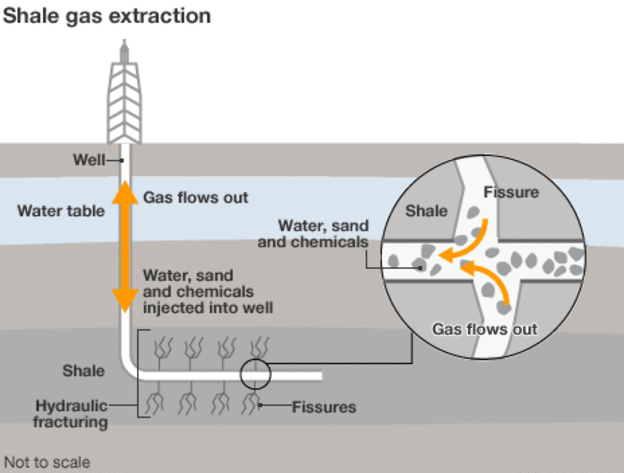In 1947, Floyd Farris of Stanolind
Oil and Gas began a study on the relationship between oil and gas production output, and the amount of pressurized treatment being used on each well.
The term fracking refers to how the rock is fractured apart by the high pressure treatment.
Fracking is the process of creating small cracks, or fractures, in underground geological formations to allow oil or natural gas to flow into the wellbore
and thereby increase production. Prior to initiating hydraulic fracturing, engineers and geoscientists study and model the physical characteristics of the
hydrocarbon bearing rock formation, including its permeability, porosity and thickness. Using this information, they design the process to keep the resulting
fractures within the target formation. In Arkansas, the target formation is often more than 500 feet below the lowest ground surface
and more than 100 feet below any fresh water zones.
Water, sand, and chemicals are injected into the rock at high pressure which allows the gas to flow out to the head of the well.
The process can be carried out vertically or, more commonly, by drilling horizontally to the rock layer.
This process can create new pathways to release gas or can be used to extend existing channels.
